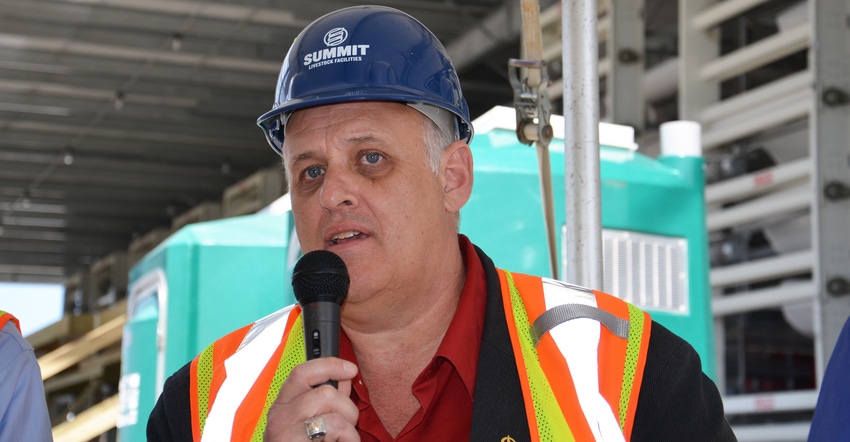May 1, 2017

The poultry industry went through its first revolution in the 1970s when backyard chicken flocks and flocks of 5,000 head gave way to automated barns holding hundreds of thousands of birds. Hens lived together in cages. Now, another revolution is underway.
The first salvo was fired over a decade ago, when a few restaurant chains, acting on customer input, demanded that chickens in cages have more space per bird. Larger cages, even though it meant fewer cages per building, looked like the solution. As the wave of consumers caring more about how their food is produced continued, the new demand was for not just bigger cages, but no cages at all.
When California passed a referendum to phase in mandatory cage-free egg production, some feared it was the end of the poultry industry, at least in California. But after the dust settled, industry leaders such as Rose Acre Farms, Seymour, realized they would have to deliver what the customer wants.
Working with Summit Livestock Facilities in Remington, Rose Acre Farms now has cage-free houses operating in Arizona in Pulaski County and at a few other locations. The company is accomplishing this with a "wrap-the-equipment" concept, where equipment is installed first and a shell is wrapped around it.
Why cage-free?
Tony Wesner, chief operating officer for Rose Acre Farms, responded to questions at a recent open house at the Pulaski County farm.
Question: Why are you building cage-free production facilities?
Wesner: The country is going to cage-free egg production. That’s what our customers tell us they want. Right now, these eggs sell at a premium, but in a few years, cage-free eggs will be the norm. They will become a commodity.
Question: Do these houses require more investment?
Wesner: Yes. If you do the math, you come out at about $10 million to build a house for just under 400,000 chickens.
Question: How does switching to cage-free production change management?
Wesner: We had to relearn what we learned decades ago. Certain breeds adapt better to cage-free systems than others. Cage-free chickens eat about 10% more. They burn more calories because they move around. So we’re feeding more corn and soybeans than before. The ration is about the same — they just eat more.
Question: If facilities cost more and chickens eat more, why do it?
Wesner: We don’t have a choice. It’s what our customers want, and we have to listen to them. We do pick up some efficiencies. For example, it only takes four to five people to operate a house like this, vs. 15 employees in a conventional cage-layer facility.
The bottom line is, we have 2,200 employees and their families depending upon us, and we have a world that will need more protein. This is the way egg production is going, so we must figure out how to make it work.
Question: Will chicken houses look like the ones you are building now in the future?
Wesner: We’ve been working with this concept for about three years. The houses we’re building now are somewhat different than the first ones built because we have learned what works and what doesn’t. That will continue, and cage-free houses that we build in the future likely won’t be exactly like these. However, the trend is clear. Unless there’s some unforeseen circumstance, we likely won’t build any new conventional cage-layer barns in the future.
You May Also Like




